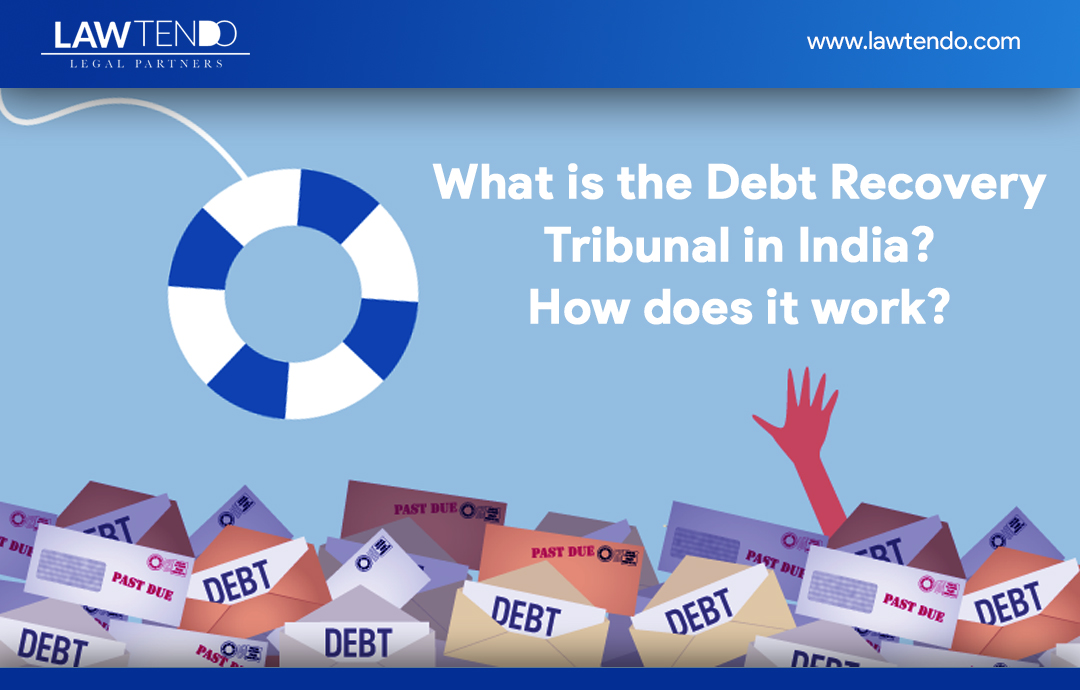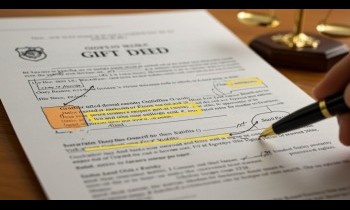What is the Debt Recovery Tribunal in India? How does it Works?

Date : 12 Jun, 2020
Post By Bhupender Tanwar
Sometimes, one can lack in financial freedom when it comes to buy something really expensive which may cross the budget line. In that case, applying for a loan can be the real way out as it meets the immediate financial and unexpected needs. These days’ loans are easily available and extend to provide certain flexibility in the financial limits. It helps you achieve life goals by assisting you to buy things like car, home or higher education.
These taken loans are not so often but are not paid due to many circumstances which lead to a situation of the institution of debt recovery mechanism against the person. This could make it very difficult for the debtor to apply for loan next time as it decreases the credit score of the debtor.
What is Debt Recovery?
Understanding the basic difference between debt collection and debt recovery, the former is the mechanism where the creditor tries to recover the loan or consumer credit if the customer fails to pay back whereas, the latter deals with the process where a third party is responsible to collect the money on the behalf of the creditor.
Debt recovery mechanism is the one which will impede one’s credit score. So basically, in this there is a creditor, a debtor and a third party collector.
The Debts Recovery Tribunal (DRT)
There were volumes of cases pile up right after the introduction of the Recovery of Debts Due to Banks and Financial Institutions Act, 1993 (RDDB Act). This Act was passed to help various financial institutions to recover the debt. The state where the application of banking is millenniums old, the functioning of a whole new set up was required. The Debt Recovery Tribunal was called for by the RDDB Act. Some states do not have a DRT while some cities have more than one. The Tribunal has one presiding officer appointed by the Central government and also is expected to discharge some duties of the presiding officer of any other state. However, the Central government may also appoint any recovery officers or any other staff as it deems necessary.
Where the state does not have any DRT in its territory, any other state’s DRT will handle over the cases of another state, having jurisdiction over it. Talking about the transfer of bunch of cases piled up in the High Courts or any court for that matter, the Act shreds light on the jurisdiction of the DRT in trying the cases having the specific course of action. It means, if on finding the course of action of the case before the establishment of the Tribunal to be of such nature which would have same effect as after the establishment, will stand transferred to the Tribunal. Owing to this, it is further provided, on transfer the Court in whom the case laid will transfer all the necessary documents to the Tribunal and in return the Tribunal will start the inquiry from the stage where the case reached before its transference or from where the Tribunal decides.
This Civil Courts were overwhelmed with many cases, making them unavailable to try cases of bank recovery. Many decrees have been pending since then, in such cases if it has been pending before the introduction of Recovery of Debts Due to Banks and Financial Institution (Amendment) Act, 2000; the decree-holder can apply to the Tribunal to pass such an order to get the amount back. This is provided in Section 31A of the Recovery of Debts Due to Banks and Financial Institutions Act, 1993.
Establishment of Appellate Tribunal
The DRT Act provides for establishing Debts Recovery Appellate Tribunal which could more than one. This Appellate Tribunal will carry out the authority, power and jurisdiction conferred with the Tribunal under this Act. The tribunals on which the particular appellate tribunal will have the authority to be exercised will be notified by the Central government through notification. The Chairperson will preside over the Appellate Tribunal, appointed by the Central Government. The appointment of the Presiding Officer and the Chairperson of the Tribunal and the Appellate Tribunal respectively, will not be brought in question and nor the act or proceeding of the Tribunals because of merely being a defect in the constitution of the Tribunal and Appellate Tribunal.
Jurisdiction of the Tribunal, its Powers and Authorities
From the date of appointment, the Tribunal will address the applications from different financial institutions having its authority, power and jurisdiction over the issue. Along with it the Appellate Tribunal will exercise its authority to hear appeals on the issue tries by the Tribunal. The Chairperson will all along perform the power to manage and supervise the activity of the Appellate Tribunal while looking into the Presiding Officer’s annual confidential reports.
Procedure for Filing an application
The following procedure has to be followed:
The financial institution in order to retract the money from the debtor, file an application in the Tribunal which has jurisdiction having limit where the defendant or each of the defendant(in case there are more than one defendant) or any of the defendant lives voluntarily or carries out business for personal profit.
If more than one financial institution have claimed the money and filed n application, they can at any stage join the application bank.
The fee of the proceedings will be charged as per the amount to be retracted.
The proceedings will start soon after the application is received. In pursuance of that, the defendant will be sent a show cause notice to present his defense as to why the claim is not valid.
The defendant after receiving the show cause notice may prepare his defense in writing which may be presented after the first hearing or in any period as prescribed by the Tribunal.
In case the claim of the defendant is to set off any amount of the applicant’s sum of money, the defendant before or whilst the first hearing may seek for setting the amount aside in its written statement of defense.
The defendant apart from the application for the setting the claimed amount aside, may also claim any cause of action as a cross-claim against the applicant before he presents his defense. To this the applicant may have the right to answer within the time prescribed by the Tribunal.
If at any stage, the Tribunal is of the belief that the defendant may cause damage to or create mischief to some part of his property or the whole property and move it away from the jurisdiction of the Tribunal, the Tribunal will then ask the defendant to submit a security.
If in any case the defendant after having asked for security does not provide show cause against it, the attachment of the property of the value as specified by the applicant will be done.
Lastly, if the Tribunal is convinced after having been presented with the defenses of both sides that the recovery of the amount should be made, it may grant certificate for recovery of debt.
Unique Engineering Works vs. Union of India (UOI) And Ors.
In 2002, the NPA Act was enacted which was contended to have retrospective effect in this case. It was argued that having retrospective effect makes the cases under the DRT Act triable under this Act. The Act states, only hearing cases where the asset is termed as a non-performing asset. But many financial institutions have termed there asset as non-performing under the NPA Act. The DRA Act is whole in itself and retrospective nature of this Act disables it.
Bihar Solex.(P) Ltd.,
In this case, it was decided that the DRT carries out exclusive jurisdiction when it comes to any courts but except the Supreme Court and the High Court, pertaining to Article 226 and 227.
Conclusion
The financial institutions are facing really hard time getting their money back and so are the courts as the cases of debt recovery pile up. The Tribunals have in the past done a great job but when it comes to debtors who are powerful, the effectiveness somewhere lacks. Many claims of pending cases in the Civil Court could be seen emerging while the clash between the Recovery Officers of the Tribunals and the Official Liquidators appointed by the High Court continued to be so. After which 2000 Amendment in the Act was sought which bought in changes but lacked a bit and preceded the SRFAESI Act. Now this Act would allow the creditors to just issue notice which was very arbitrary for the fact that it did not involve any adjudicating forum but after amendment it did and that adjudicating forum is DRT. Now, DRT functions for both the DRT Act and the SRFAESI Act.
How can Lawtendo help?
LawTendo has around 15000+ lawyers across India in our platform. LawTendo strives to facilitate cost-efficient and quality legal service to our clients. You can contact us at +91-9671633666 or info@lawtendo.com.





